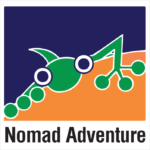How to safely do outdoor activities during CMCO
- Keep your distance-sports distance.
- Stay within your abilities
Exercising good judgement has always been a critical outdoor leadership skill and it is even more important during this pandemic. This is not the time to blaze new trails in an unknown area or to set a personal best riding that extreme downhill mountain bike route! Choose activities and durations that are within your skill level. Have some knowledge of the area where you are going, especially evacuation routes. If an area is closed, do not go there. Remember that you are conducting these activities largely on your own, without guides or instructors to provide a safety net.
The whole aim of “flattening the curve” was to not overtax the rescue or health services. If they have to come out to perform a rescue, you are putting them at risk as well as taking valuable resources away from people who are sick.
- Choose your companions carefully
You don’t want to be by yourself in case of an emergency. If you have to be alone, make sure that a responsible person knows your itinerary and time frame.
CMCO rules allow for groups of no more than 10 people. Ensure that you know how to contact each of the members of your group, for contact tracing purposes. Ensure that you know the fitness and ability level of all your companions. Consider everyone in the team and set a comfortable pace that the weakest member of the group can cope with.
- Learn first aid
- Drink plenty of water
- Have appropriate equipment and clothing
- Pay attention to the weather
- Stay calm if you get lost.
The most effective way to prevent mishaps is to adequately prepare for the trip. Some basic outdoor knowledge plus a little common sense can help to ensure a safe and enjoyable outdoor excursion. If we exercise good judgement and act responsibly, we can all experience nature’s healing power.
Marc Berman, a psychologist at the University of Chicago said, “Our research has found that nature is not an amenity — it’s a necessity,”. Even though we have been repeatedly told to Stay At Home to Be Safe, some mental-health professionals have pointed out another perspective: Mother Earth is home too.
Sorry, the comment form is closed at this time.



Guglielma Ingelbert Cohleen
An amazing article with a lot to think about! Prayers and positive thoughts always